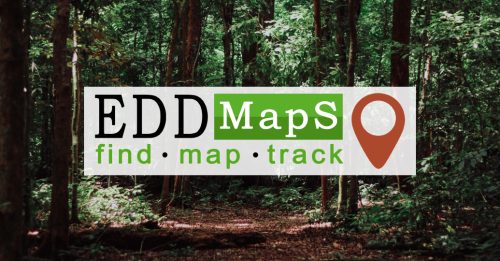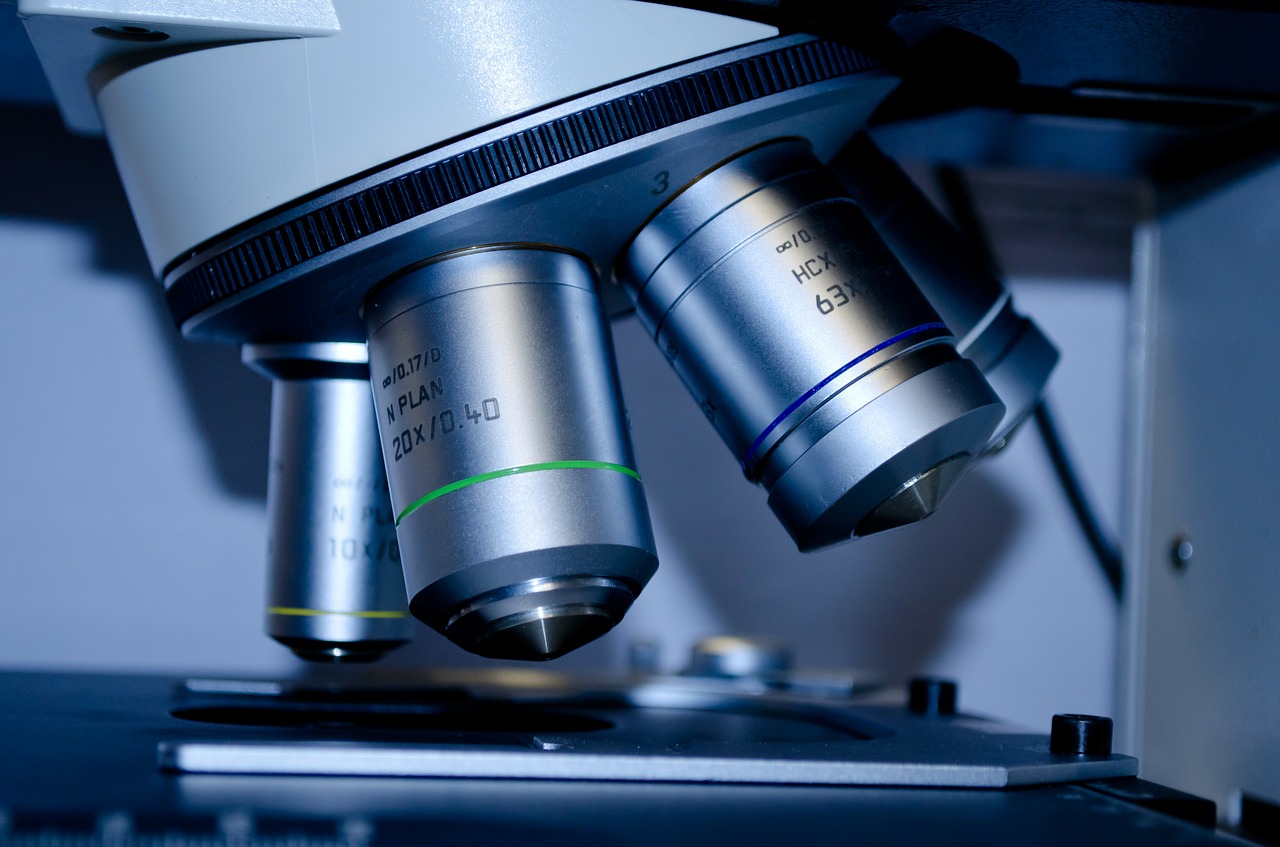
Green Shovel partners are working together to improve the coordination, development and implementation of new invasive species tools and techniques that meet the needs of land managers. As part of this work, partners are developing new tools related to wild pig surveillance, eDNA genetic detection tools, forest pest training and EDDMapS mapping and detection software. Support and funding for all Innovative Tools projects was generously provided by the Ontario Ministry of Natural Resources and Forestry.
Click on the buttons below to learn more about a specific project, or keep scrolling to read more about all of the projects.
Tool Gap Analysis and Road Map
In addition, the Green Shovels Collaborative conducted research to identify invasive species tool gaps and opportunities through surveys, working sessions, phone conversations, emails with practitioners, and the Invasive Species Centre Forum in March 2021.
Land managers require a diversity of complementary tools to coordinate efforts, detect, map, monitor and control invasive species, and to educate and engage the public. As new invasive species arrive in Ontario and existing ones spread into new regions, we must invest in the research, development, and application of innovative tools.
Stakeholder consultation uncovered recommendations for the creation of new tools and the greater accessibility and use of tools for collaboration, outreach, education and engagement, decision-support, prevention, detection, monitoring and mapping, regulations and legislation, assistance for private landowners, and increased and improved financing.
Genomic Tools and eDNA Monitoring for Priority Aquatic Invasive Species Through Community Science
eDNA, or environmental DNA, is the genetic material that all living organisms shed as they move through their environments. Scientists have learned how to detect eDNA in air and water samples, providing insight into the past or current presence of species in specific areas (Thomsen and Willerslev, 2015).
In Spring 2021, a pilot project was launched to demonstrate the viability of using eDNA aquatic invasive species (AIS) monitoring in community science programs to inform policy and management decisions and to increase awareness of AIS in lake communities across Ontario. Lessons learnt from this pilot project will help inform the feasibility of using eDNA in community science programs to monitor for the presence of AIS.
This pilot project, with a dedicated team of partners and volunteers will help refine community science protocols for eDNA sampling. eDNA lends itself well to community science because it requires a minimal time commitment and follows a simple sampling protocol. In addition, it gives volunteers a rare opportunity to participate in AIS early detection – our best hope at eradication.
In late summer and fall 2021, members of 10 lake and cottage associations from across Ontario will collect samples and submit them to MNRF for eDNA testing. This simple action will determine the presence or absence of AIS in these lakes, and so help in the fight against AIS. And most importantly, it will allow for the early detection of new and emerging IAS populations, which can help inform future policy and management decisions.
- Lake of the Woods, Lake of the Woods District Stewardship Association, Northwest Ontario
- Shebandowan Lake, Shebandowan Lake Campers’ Association, Northwest Ontario
- Lake Matinenda, Lake Matinenda Cottage Owners Association, Near North
- Big Basswood Lake, Big Basswood Lake Property Owners Association, Near North
- Chandos Lake, Chandos Lake Property Owners Association, Central Ontario
- Kennisis Lake, Kennisis Lake Cottage Owners’ Association, Central Ontario
- Lower Beverley Lake, Lower Beverley Lake Association, Eastern Ontario
- Newboro Lake, Newboro Lake Cottage Owners Association, Eastern Ontario
- Redhorse Lake, Dedicated volunteers, Eastern Ontario
- Lake Erie – Long Point, Lake Erie – Long Point Ratepayers Association, Southwest Ontario
- Chesley Lake, Chesley Lake Cottagers Association, Southwest Ontario
Project Team
Invasive Species Centre with support from the Ministry of Natural Resources and Forestry, the Federation of Ontario Cottagers’ Associations, and the Ontario Federation of Anglers and Hunters Invading Species Awareness Program and special support from Natasha Serrao (U Waterloo) and Colleen Cirillo (ISC contractor).
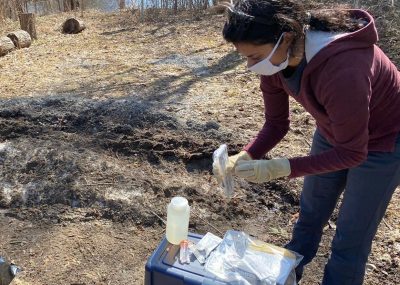
Innovative Early Detection for Wild Pigs – Wild Pig Webcams and the Wild Pig Surveillance Program
The presence of wild pigs (Sus scrofa) is an emerging issue for Ontario as wild pigs have already caused widespread problems in Canada’s prairie provinces and many American states. The Ontario Federation of Anglers and Hunters (OFAH) Invading Species Awareness Program has launched a Wild Pig Surveillance Program (WPSP), an innovative citizen science tool that enables volunteers to deploy, bait, and monitor trail cameras with the goal of increasing the level of wild pig surveillance in Ontario.
This new tool equips volunteers with the knowledge, equipment, and protocols required to detect wild pigs to better understand their current distribution in Ontario and inform potential management strategies.
In 2021, the WPSP was implemented in Wildlife Management Units (WMUs) 49 and 50, as well as a small pilot project in Lanark County. In March, OFAH worked to recruit volunteers for the WPSP through a digital call to action on social media and an e-blast to OFAH members. Interested volunteers completed a survey and watched a pre-recorded training webinar to enroll in the program. Based on the survey responses, OFAH-owned trail cameras were provided to volunteers in the designated surveillance areas for a fixed period from March – August 2021.
The early detection of any free-ranging pigs is vital to preventing the establishment of this invasive species. They are a threat to Ontario’s landscapes, negatively impacting the environment and affecting recreational, ecological, and economic values.
To learn more about wild pigs click here.
Project Team
Ontario Federation of Anglers and Hunters (OFAH) Invading Species Awareness Program and the dedicated volunteers from the OFAH membership.
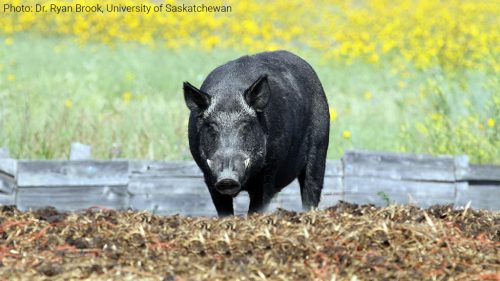
Improved Training for Invasive Forest Pests
There is a demonstrated need for training tools that will increase forest pest knowledge and ability among technical forestry audiences. The Covid-19 pandemic heightened the call for development of a set of standalone, self-directed, pre-packaged training modules that include self-assessment tools on invasive forest pests, to be employed on virtual platforms. The modules are comprehensive, technical in nature and intended for a wide range of users, including arborists, urban and industrial foresters, first nations land managers and woodlot owners and will support existing training programs delivered by the Invasive Species Centre. This newly developed training material will be employed on virtual platforms and in face-to-face delivery programs. The selected species include both emerging and established invasive forest pests:
- White Pine Blister Rust
- Oak Wilt Disease
- Dutch Elm Disease
- Emerald Ash Borer
- Lymantria dispar dispar (Ldd, also known as European Gypsy Moth}
Project Team
Invasive Species Centre and Dr. Richard Wilson (ISC contractor).
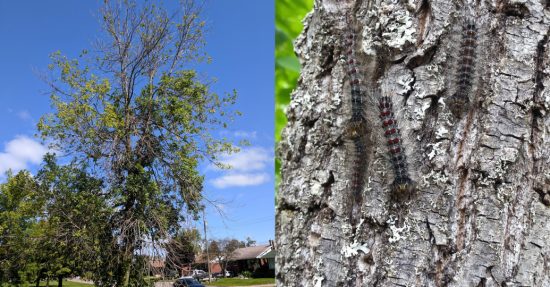
Development and Integration of Mapping Tools
The Early Detection and Distribution Mapping System (EDDMapS) is an invasive species website and smartphone application that enables land managers and community scientists to report invasive species. Reports are then verified and made available for public viewing. EDDMapS Ontario, developed in 2010s, is operated by the Ontario Federation of Anglers and Hunters’ Invading Species Awareness Program (ISAP) with support from the Ontario Ministry of Natural Resources and Forestry.
The National EDDMapS Working Group had been exploring opportunities to make centralised invasive species data publicly accessible and more useful and to better integrate the many provincial or regional applications and interfaces that feed into EDDMapS and thanks to generous support from the Ontario Ministry of Natural Resources and Forestry and others, a more integrated EDDMapS now allows for:
- Easier adoption of EDDMapS by neighbouring provinces or regions looking to use EDDMapS
- Reduced maintenance and upkeep costs due to shared platform between many supporting jurisdictions
- Easier integration of invasive species reporting data from other jurisdictions
- More regular and complete data exchange between EDDMapS and other platforms such as iNaturalist
Project Team:
- Invasive Species Centre
- National EDDMapS Working Group
- Ontario Federation of Anglers and Hunters’ Invading Species Awareness Program (ISAP)
- Alberta Invasive Species Council
